
The health and longevity of aquarium and pond fish are directly related to the quality of the water they live in. During the past decade, aquarists and pondkeepers have become more aware of the importance of regular water chemistry testing. Retailers have noticed that there has been both an increased demand from their customers for test kits and a proliferation of many different kinds and brands of kits and testing devices. In addition, both retailers and manufacturers have taken note of an increased demand for detailed information about testing and test kits. Finally, hobbyists are awakening to the importance of expiration dating and the realization that most aquarium water chemistry kit reagents have very limited shelf lives (some of the most important ones have expiration dates as short as six to nine months after being manufactured).
Why Test?
Aquarists, retailers, breeders and wholesalers all benefit from accurate, periodic testing of water quality, which can often mean the difference between live or dead fish. Routine water testing, especially for those with large numbers of fish — representing a significant investment — ensures that fewer disease emergencies have to be dealt with. In addition, the money not spent for medications and replacement fish more than offsets the costs of test kits and testing devices. Because disease is easier to prevent than cure, the number of often futile attempts at disease treatment are greatly reduced. This is because stressful environmental conditions can be detected easily and cheaply and then corrected long before chronic or severe disease conditions appear.
What to Test?
For general purposes, the water chemistry parameters most often recognized as being particularly important are pH, total ammonia, nitrite and nitrate. Other parameters (i.e., hardness, phosphates and alkalinity) can also be monitored, but these represent qualities that are of more importance to advanced aquarium hobbyists and breeders. These parameters, while arguably significant for some species and for some aquarium or pond conditions, are not of such importance that failure to test them routinely will likely result in rampant deaths or serious disease conditions.
Other tests, such as total chlorine and copper, tend to be restricted in use to those who need them for specific conditions or purposes. Marine aquarists who use copper to medicate their aquariums, for example, must carefully monitor copper levels during treatment. These kits are available from a number of different companies both in the aquarium industry and laboratory supply distribution.
"Pocket" Testers
"Pocket testers" are now readily available. These have been overwhelmingly accepted by gadget-oriented hobbyists and retailers. These testing devices are available for only a handful of parameters (i.e., pH, oxidation/reduction potential, total dissolved solids, conductivity), but their perceived convenience has made them very popular.
It is both amazing and unfortunate that so many hobbyists have suddenly come to respect the readings these devices provide. Aside from pH, the water-quality parameters being measured are relatively meaningless without a detailed understanding of what is at the root of the readings observed. Outside of those who have had some chemical laboratory experience, few recognize that these devices are actually disposable and are generally poor substitutes for more expensive, table-top units. Worst of all, some units are even less reliable than the simple test kits using powders and/or solutions to arrive at colors that are compared against color standards.
False Readings
Along with the increased awareness of the importance of routine and accurate water chemistry testing has come an awareness that not all test kits will be reliable under all possible aquarium conditions. For example, the Nessler's-type test kits for total ammonia are strongly interfered with by very hard water and by seawater — most manufacturers supply a special reagent that prevents the cloudiness (precipitation) seen in such water samples. Often, more of this cloudiness-preventing reagent is needed than is indicated by the kit's instructions. Most nitrate kits are severely affected by the presence of chloride in the water. Therefore, special provisions have to be made to ensure accurate measurements of nitrates when using these kits to test seawater.
A different kind of problem occurs when using one-step water conditioners, or at least the one I developed, which you know as AmQuel. Aquarists quickly learned that the venerable Nessler's kit gives false, high readings for ammonia when AmQuel is used to neutralize ammonia in an aquarium. The problem is easily avoided, however, by using the more commonly available, more sensitive and more reliable alkaline-cyanurate (salicylate) kits for determining total ammonia in water treated with AmQuel. The awareness that commonly used aquarium additives can have serious effects on the readings of some types of test kits has made knowledgeable aquarists wary of unexpected readings, and they question the possible interferences of many aquarium chemicals.
Dissolved Oxygen
One of the more important water quality parameters is dissolved oxygen. Few aquarists and even fewer aquarium fish retailers and wholesalers are even aware that the concentration of life-giving and easily depleted oxygen can be determined. There are highly reliable dissolved-oxygen meters that read the concentration directly, as well as different kinds of chemical test kits.
Dissolved oxygen testing ranks as one of the most important determinations a fishkeeper can make. Just as with different values of pH, total ammonia, nitrite and nitrate, the amount of dissolved oxygen can have a significant affect on fish. Many of the behavioral peculiarities noted in aquarium or pond fishes can be attributed to low dissolved oxygen, which can be corrected easily with increased aeration. It should be noted that both the Winkler and modified Winkler kits give erroneously low readings in water that has been recently treated with AmQuel.
Accuracy and Reliability
In terms of testing reliability (accuracy and reproducibility), few test kits have an accuracy of less than ± 5 percent. This means that the readings of many kits will represent actual concentrations that fall within a 10-percent range. For instance, if a test kit measurement is at the 0.25 mark on its color scale, the true value will be somewhere between 0.2375 and 0.2625.
An individual kit's reliability is dependent upon several factors. Some are controlled by the manufacturer and some by the user. The manufacturer controls the quality and quantity of the reagents. Too little or too much reagent can often cause significant differences in readings. Improper packaging can also cause differences in readings. Liquid reagents are subject to increased reagent concentration and degradation because of evaporation and absorption of air into the solution.
Poor color comparison schemes are also significant contributors to inaccurate and non-reproducible readings. Those kits that make use of side-by-side color comparisons with transmitted light (holding both the sample and the color standards up to the light) are inherently better and easier to compare than those that use comparisons between transmitted color (of the sample in a tube) and reflected color (of printed color standards on paper).
Some kit chemistries require that the sample be reacted for a given time period, while others (i.e., the alkaline-cyanurate kit for total ammonia) require that the reagents be added in a certain order and reacted for specified time intervals (often with continuous shaking). The kits for nitrite require a minimum reaction time for complete color development. Exposure to sunlight will cause nitrite color samples to change enough that a meaningful comparison is impossible. Even the use of different types of light will cause significant comparison problems — sunlight, incandescent and fluorescent lights all give different results. Each kit should specify the light conditions under which comparisons are to be made.
As mentioned above, expiration dating is an important consideration in test kit reliability. Retailers and wholesalers should never sell out-dated (or soon to be out-dated) kits, and out-dated reagents should be discarded or returned to the manufacturer (some will replace out-dated reagents in certain circumstances). Once a kit is purchased, it should be used routinely (the value of a kit certainly doesn't increase with age) and the results should be permanently recorded so that developing trends can be recognized.
Some reagents lend themselves to long-term storage only as dry powders (i.e., Nessler's, alkaline-cyanurate and nitrite reagents), whereas others can be stored fairly well as solutions as long as absorption of air (both oxygen and carbon dioxide may cause problems) is kept to a minimum by keeping them tightly capped. The exclusion of light from the reagents and the color comparators will help ensure that degradation does not occur in either. Refrigeration is always the best way to store reagents when not in use. Cooler temperatures (and darkness) keep the rates of degradation very low.
Another aspect of aquarium and pond water testing is standardization of the reagents. Although this is not easily accomplished by the average aquarist, it does represent a way of considerably increasing kit accuracies. Standard solutions are available from laboratory supply houses for almost every chemical parameter (including ammonia, nitrite, nitrate, copper and hardness). Standards for pH, chlorine and dissolved oxygen are not practical. A standard is utilized by testing with a given kit, just as if it was a water sample. Once a standard has been tested, one can quickly tell whether or not each kit is providing reliable readings. It shouldn't be surprising to learn that some kits will always read high while others will always read low. Still others will vary with each different reagent lot.
It must be noted that most kits fail to take into account the variances in readings due to existing color and/or cloudiness in the water sample. Most aquariums and ponds will develop some degree of yellow color over time, which can contribute significantly to the perceived color of a given test. Both Nessler's and alkaline-cyanurate test results will be thrown off by any significant yellow color. In addition, most pH color comparisons will be negated by yellow water. Those kits that make use of a "blank" water sample will always give the most reliable results. The blank sample is usually positioned behind the color standard (which is next to the sample to which the reagents have been added) and the best color match is made. The effects of existing color and cloudiness are thus compensated for.
Safety
There is even a safety component to be considered when doing water testing. Test vials should never be rinsed in the aquarium or pond. The test sample must not be poured back into the aquarium or pond. Some reagents are highly toxic (i.e., Nessler's reagent contains mercury compounds) and some even contain highly carcinogenic chemicals (cadmium in nitrite and low-range nitrate kits and orthotolidine in some chlorine and ozone kits). One's finger tips should never be used to close the opening of a test vial — this will not only effect the accuracy of the test, but contamination of the skin with the test chemicals will occur.
Aquarium Shop Testing
It is appropriate here to mention the practice of having someone else do your water testing. It is often the practice of retail aquarium shops to offer water testing, sometimes for a fee, as a service to their customers. The problem with this practice is that some of the more critical water quality parameters cannot be properly determined in a water sample that is more than a few minutes old. For instance, pH changes rapidly in a sample, and within about 15 to 20 minutes it can be significantly different from what it is in the aquarium or pond from which the sample was taken. Ammonia and nitrite must both be tested within a very short time after the sample is taken. Failure to test immediately often results in the ammonia and/or nitrite being reduced in concentration because of continuing bacterial oxidation in the water sample. These values will differ from those in the aquarium or pond, where the continuous activities of the aquatic plants and animals contribute to the immediate chemical conditions of the water.
Dissolved oxygen testing must be done on the spot. The simple act of pouring the sample from one container to another will significantly increase the dissolved oxygen concentration in the sample. Hardness, specific gravity, total dissolved solids and copper are a few of the parameters that "can" be tested successfully several minutes or hours after the sample is collected. However, all water testing is best when conducted on site. In my opinion, retailers will better serve their customers by selling them the appropriate test kits for their personal use and advising them to test their water routinely.
Meters
The use of electronic meters coupled with probes (electrodes) designed to sense specific chemical water quality parameters is often much more reliable, accurate and reproducible than test kits. The popularity of pocket meters, as mentioned above, has grown considerably. However, few aquarists realize that these instruments are actually disposable counterparts to the more expensive bench-top models. Just like the top-of-the-line bench-top models, these pocket meters must be standardized on a regular basis. With pH meters, for example, their best performance is accomplished with daily standardization (for each day used). The probes have a useful lifetime of approximately 9 to 15 months. Thus, a pocket pH meter should be replaced every 12 months (which is the usual replacement period for the probes used on the more expensive meters). Routine cleaning (after every use), proper storage (usually in a special storage bottle for separate probes and in specially designed caps for the pocket meters) and care to prevent mechanical shock to the instrument and probe are necessary to ensure accurate performance.
Electronic instruments must be standardized. Ion-specific electrodes are available for almost every chemical parameter (i.e., ammonia, nitrite, nitrate, chloride, calcium and sodium). Some of these probes must be standardized every four hours during use. These probes can be fairly expensive, and as with pH probes, few are usable after just a few months and must be replaced.
One of the most overlooked considerations when electronic probes are being used is that either the probe or the sample being tested must be agitated. Most aquarists simply dip their pocket pH pens into an aquarium and wait for a steady reading to display. In actuality, a reading obtained in this manner can be significantly off from the true value. To ensure a proper reading, the probe's surface must be continuously presented with a refreshed sample. This is because the water in immediate contact with the probe's surface is quickly depleted of the ions being sampled, and the reading changes.
When using hand-held probes in aquarium or pond testing, it is best to keep the probe's tip in constant, moderate motion (avoid vigorous stirring) while taking the reading. As soon as the numerical display on the meter has stopped drifting, a reading can be taken. In the laboratory, the probe is usually immersed in a small sample of the water contained in a beaker or flask and the water is gently stirred magnetically. Despite the cautions given above, test kits are valuable tools for determining the water quality in aquariums and ponds. Used with care and understanding, these kits can help you maintain aquatic environments that will assure your fish long and healthy lives.
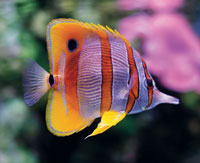 Aiptasia Anemone
Aiptasia Anemone
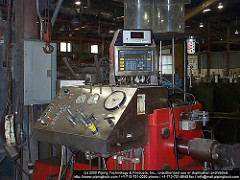 Would You Like The Supreme Fishing Experience? Heres The Reason Why It Is Essential To Carry The Mo
If what youre seeking out is considerably more fish thr
Would You Like The Supreme Fishing Experience? Heres The Reason Why It Is Essential To Carry The Mo
If what youre seeking out is considerably more fish thr
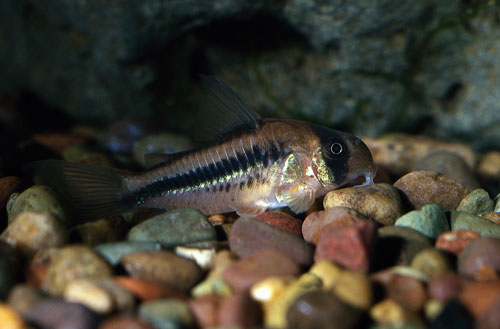 Top 10 Fishkeeping Mistakes
Aquarists can say they’ve never made a mistake in their fish
Top 10 Fishkeeping Mistakes
Aquarists can say they’ve never made a mistake in their fish
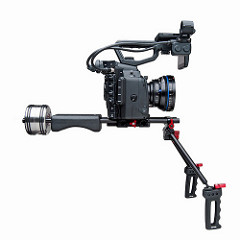 Catch More Salmon - Follow These Simple To Implement Techniques
FLAT Rigs outriggers, shock cord snubber, and rigging kit i
Catch More Salmon - Follow These Simple To Implement Techniques
FLAT Rigs outriggers, shock cord snubber, and rigging kit i
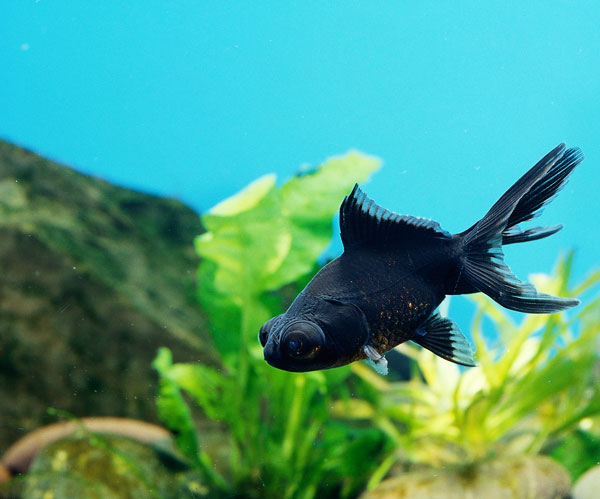 Fish and Fungus
Black Moor Q. I have two large black moor goldfish, one larg
Fish and Fungus
Black Moor Q. I have two large black moor goldfish, one larg
Copyright © 2005-2016 Pet Information All Rights Reserved
Contact us: www162date@outlook.com